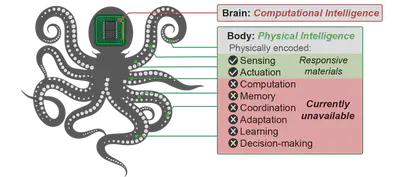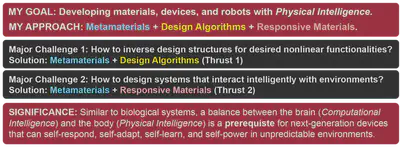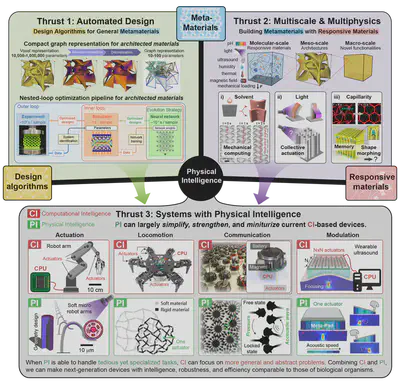Bolei Deng (邓博磊)
Postdoc in Mechanical Engineering and Computer Science
CDFG, CSAIL, MIT
ZhaoLab, MECHE, MIT
News
I am joining Georgia Tech as an Assistant Professor on Dec 1, 2023 leading the Computational Design & Metamaterials Lab (CDM Lab). I am looking for multiple Ph.D. students 🎓🎓🎓 (checkout opportunities page for more information).
What are metamaterials?
Metamaterials are a class of structural materials with exotic properties, where their macroscopic physical characteristics arise from the precise geometric design of their microstructures.

My role in this
My lab will leverage artificial intelligence and machine learning for multi-scale design and optimization of metamaterial meso-structures.
About Physical Intelligence
What is Physical Intelligence?
Over billions of years, to survive in unstructured real-world environments, biological organisms have developed not only neural intelligence in their brains, but also Physical Intelligence encoded in their body. For example, Venus flytraps can sense their prey with sensory hairs, process signals and make decisions using chemical reactions, and capture the prey via snap-through instabilities without requiring central neural systems.
My approach to Physical Intelligence
I will combine my expertise in Metamaterials (nonlinear waves, phase transitions, soft robotics), Responsive Materials, and Design Algorithms to develop next-geneartion materials, device, and robots with Physical Intelligence.
A road map
The following is a preliminary roadmap for the development of physical intelligence. Thrust 1 and 2 aim to unveil the fundamental relationships between materials, structures, and functionalities, and to build programmable metamaterials that can intelligently interact with environments. Building upon these foundations, Thrust 3 focuses on the creation of systems that exhibit sophisticated physical intelligence.